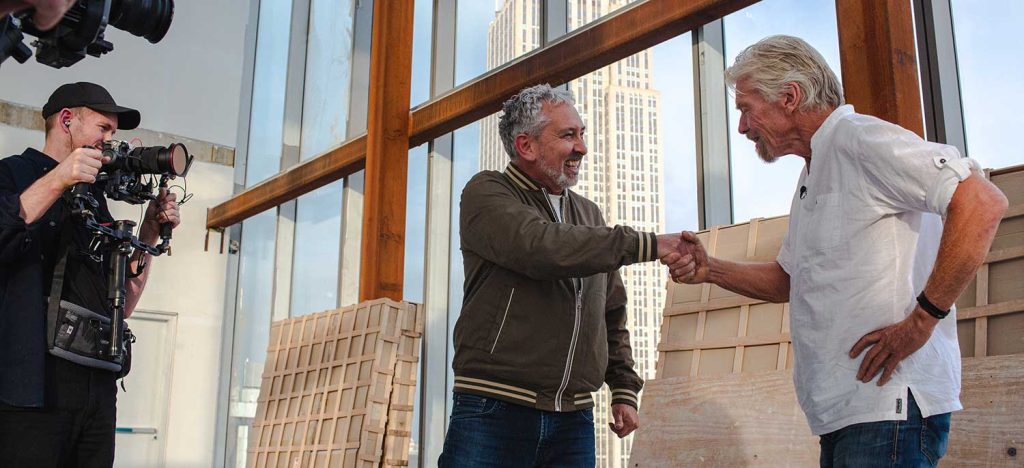Renault Twin’Z by Ross Lovegrove
Fancy meets function in a glass-roofed, luminescent commuter car

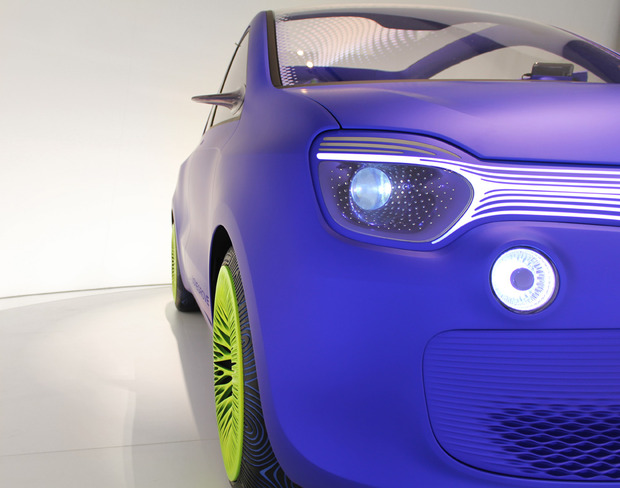
The Twin’Z was unveiled at La Triennale during Milan Design Week as the fifth concept car in Renault‘s six-petal “cycle of life.” The car represents the “Play” petal, embodying the theme with a silhouette and material construction reminiscent of a running shoe. The French company teamed up with Welsh furniture designer Ross Lovegrove—known for organic lines and crystal-clear vision—to realize the project, his first automobile design. Joining him was industrial design director Laurens van den Acker, concept car design director Axel Breun and designer Raphaël Linari. We got a personal tour with the designer who pointed out the details and behind-the-scenes inspiration.
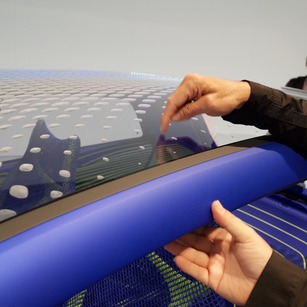
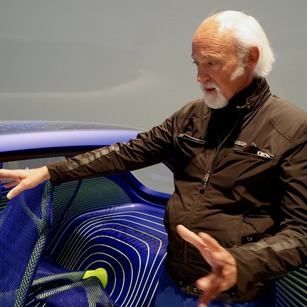
“The great thing about Renault is that their concept cars are not far off from the real thing,” Lovegrove tells us. “Most of the world is doing all this singing and dancing—it takes a lot of courage to make something that is maybe 20-25% off reality.” Given Renault’s track record, we’ll give Lovegrove the benefit of the doubt. The glass roof, which sweeps with illuminated LEDs when the car brakes, has earned sci-fi comparisons to the likes of Avatar and Tron. But Lovegrove’s fantasy isn’t indulgent or lofty. “That’s a fully working car,” he adds. “You could drive it home.”
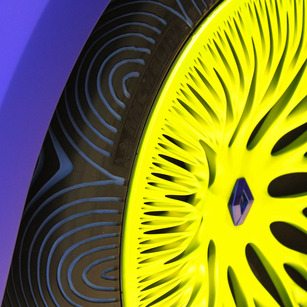
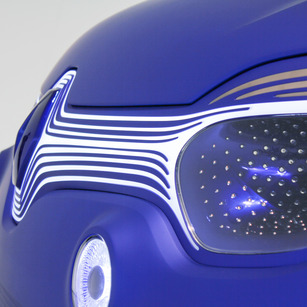
Twin’Z is an all-electric city car with rear-wheel drive and a rear-mounted motor, sitting on robust 18-inch wheels. Some clever technical solutions define novel style details like the rear-mounted motor and the position of the batteries beneath the floorboards, both of which make the cabin exceptionally spacious. Electric-powered doors hinged at the front and rear of the vehicle eliminate the need for a central pillar and make the opening pleasantly ergonomic.

Thankfully for Lovegrove, there’s plenty of room for aesthetics in electric automobile design. Two colors intersect on the body: Blue—a tribute to French painter Yves Klein—and glowing green. The colors are matte, with just enough sheen to see the contours of the car and interact in a natural way. The shapes of lights, tires and rim follow an aesthetic of biological imitation. The front fog lots, for example, can be colored to become a signature of the driver or to match the driver’s eye color, for example. The interior has been simplified, removing the dashboard in lieu of a smartphone that sits above the steering column. Instead of large and heavy seats are frames wrapped in 3D-woven, self-cushioning, breathable textiles. The rest of the cars functions are controlled on a standard tablet that attaches to a very minimal central console. The wheels are a particular area of interest and opportunity for Lovegrove, who noted that most rubber is actually tinted black.
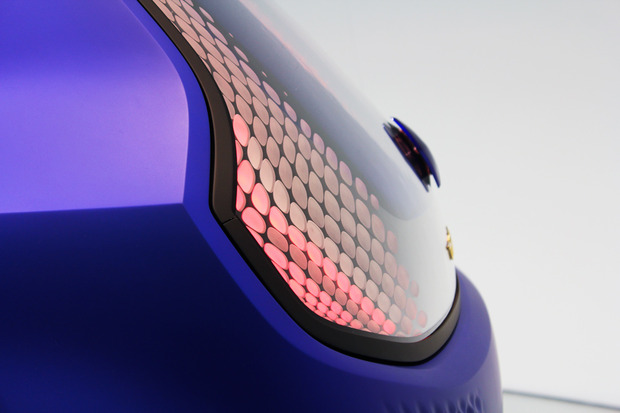
So why the glass roof? “If you’ve ever driven through Tokyo at night in a glass-roof car, you get that flickering—you feel like you’re in a movie,” Lovegrove explains. The envelope around the driver, dramatized by the brake display, also enhances the feeling of enclosure. “It’s all space-expanding, it’s pilot-centric,” he says. “All of the energy lines are coming out of the driver.”
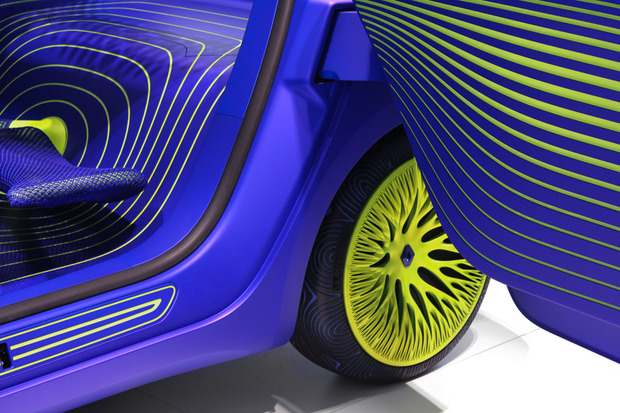
While it may look fanciful, Renault makes cars that everyone can own and enjoy, and this is a responsible car for the daily commute. Look out for design elements of the Twin’Z concept to be incorporated into the 2014 Twingo.
With reporting by Paolo Ferrarini, Evan Orensten and James Thorne. Images by Paolo Ferrarini and Evan Orensten.


